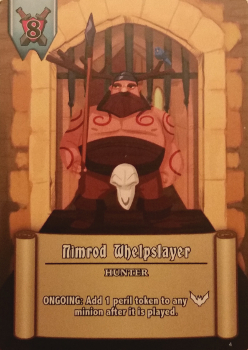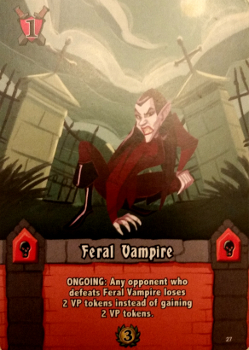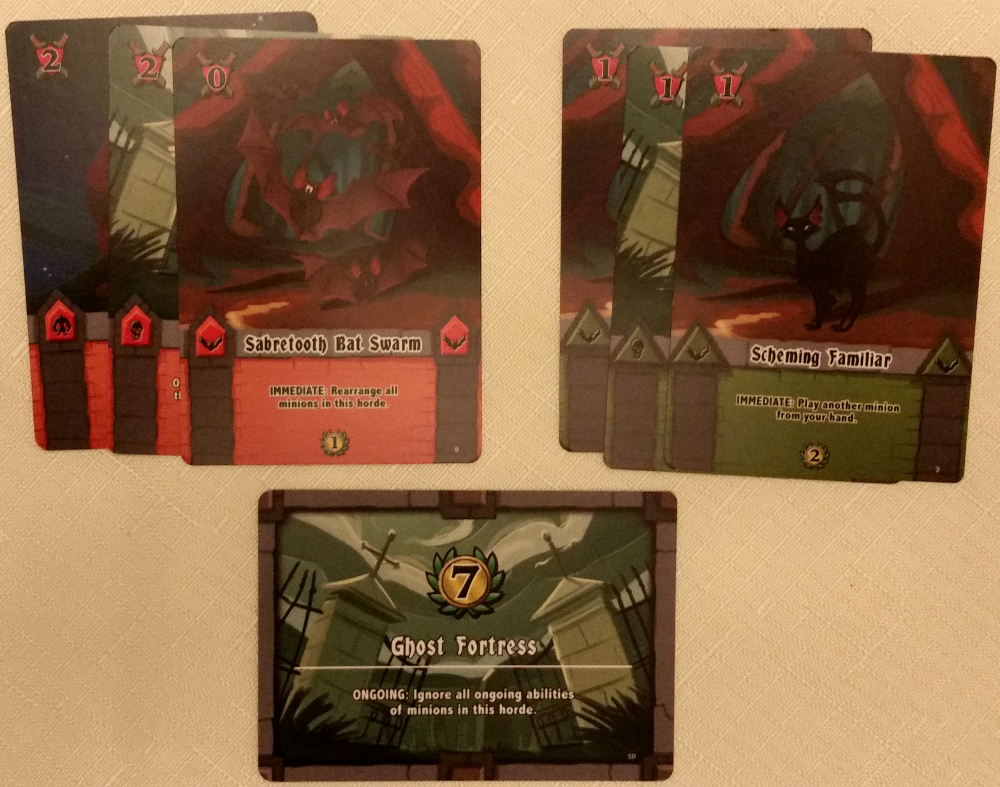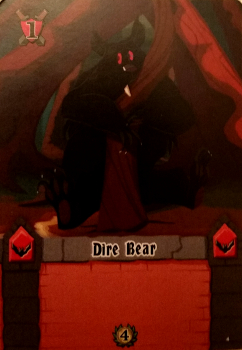You know those days when everything seems like it’s going perfectly, where the world around you is bending to your favorable will and the only direction for things to go is up? You know those days when you feel all that…and then it all comes violently crashing down? Chances are you have. We bet a few of them still sting. That’s because when the rug gets pulled out from under all your hopes and dreams, it leaves a mark. A harsh but invisible mark reminding you that life isn’t always fair, and sometimes no matter how much preparation goes into a well-orchestrated plan, things can unravel in a hurry. Well…that’s us. There we were, on the cusp of finally overrunning Capital City, chock full of annoying do-goodery (you know the one), when out of nowhere a bunch of heroes show up for a summit or annual brunch or something. Right there, approaching the moment of triumph, that’s where it all fell apart.
How were were to know all those legendary adventurers would be there?!?
Defeat snatched from the jaws of victory. We were stopped short, and now we’ve been routed. Now we’re just trying to stay alive. Our only chance is to make it back to the sanctuaries of Darkmoor, where even the irritatingly persistent heroes won’t dare to follow. Seriously, the last week has been embarrassing. Sure, sure, best laid plans of mice and minions and all that. But this one definitely is going to leave a mark…
And so it goes for the villains inhabiting the fantastical lands of Retreat to Darkmoor, the latest lightweight 2-4 player game to come out of Action Phase Games. In this 30 minute exercise of what it’d be like to be an evildoer getting thoroughly trounced, each player is a dark overlord who must lead their army of monsters, creatures, and malcontents on a, shall we say, tactical withdrawal from their latest onslaught. Not only have a band of legendary heroes thwarted the players’ plans at the onset of the game, but they’ve also given chase. Throughout the course of the game, the goal is to avoid the wrath of the heroes on your trail and make it back to safe territory. Luckily, it’s every faction for themselves. In this game, your minions don’t have to outrun the good guys – they just have to outrun the other players.
Of course, accomplishing that may be easier said than done.
Rules-wise, Retreat to Darkmoor is refreshingly simple to learn, befitting its small box footprint. Each player starts off receiving an identical deck of Monster cards. Every Monster is unique and comes with a handful of traits, including a VP value, a Peril value, and their own effect when played to the board.
At one end of the table are a handful of randomized Location cards, which represent the safe lands where your Monsters are attempting to escape to. At the other end is a stack of Heroes (also randomly selected), who are just itching to reduce the minion population a little further. Only one Hero is faced at any given time, though, so that’s a little bit of a reprieve for these already-defeated creatures.
On your turn, you choose a Monster card from among a hand of five and play it to any Location column behind any other cards already present. This forms that Location’s ‘horde’. Most Monster, Location, and Hero card effects in the game consist of either an immediate effect when the card is played or an ongoing effect that persists while the card is out.
The majority of Darkmoor’s cards revolve around manipulating how other player’s minion cards are laid out on the board and do things such as swapping unit spots, returning someone’s card to their hand, or simply moving your opponent’s minions to the back of the line in the hopes of them becoming being arrow fodder.
And fodder they very well may become.
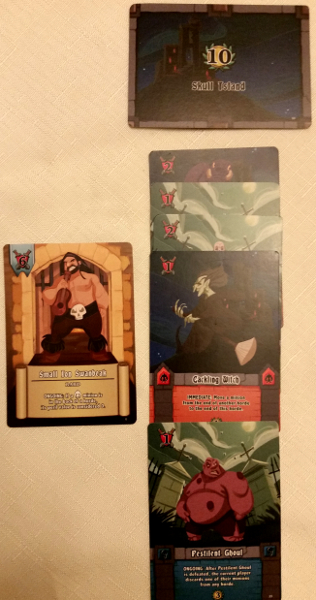
With 6+ Peril, this horde has triggered an attack from…the Bard? Talk about hitting a low point…
Prototype Shown
After playing your card, it’s time to check the Kill O’Meter, also known as the Peril level, for each horde line. If the total Peril value of the Monsters in a horde is less than the Peril number of the Hero, nothing happens. Simply draw a new card and it’s the next player’s turn. Yet when a horde reaches enough Peril to attract the ire of the Hero (and it will), then it’s killing time. At that point, the Hero goes on the warpath and kills off the Monster closest to them, which exists as a good news bad news sort of thing.
The bad news is that Monster is dead, dead, dead. The good news is that the remaining minions in that column escape entirely to the safe side of the Location until the end of the game. The Hero then buggers off for some celebratory ale, and the next Hero in the stack is revealed.
Attempting to make a clean escape with your minions is part of this game’s allure, though escape is far from guaranteed if your opponents have anything to say about it (and they will). The frantic jostling and reshuffling of everyone’s creatures by carefully selecting the timing and location of cards to place on the board is precisely what makes Darkmoor so intriguing, and the ever-changing board state plays well into the game’s impish theme of bad guys in a fully panicked retreat.
At its core, Retreat to Darkmoor is one part puzzle-like strategic maneuvering and one part madcap antics, cleverly mixed together. It forces players into a contested fight over whose denizens end up saved and whose end up dead, but it also wisely ratchets up that turmoil incrementally as the hordes build up and the number of viable places to avoid a Hero attack goes down.
Further evidence of the game’s merit rests with the fact that the game behaves slightly differently depending on the player size – which is very advantageous for what is essentially a light area control game. Two player sessions move methodically as each side carefully tries to out-position one another for control of Locations, but it’s also slightly less cutthroat than with three or four players where you’re almost guaranteed to have someone routinely upending your plans.
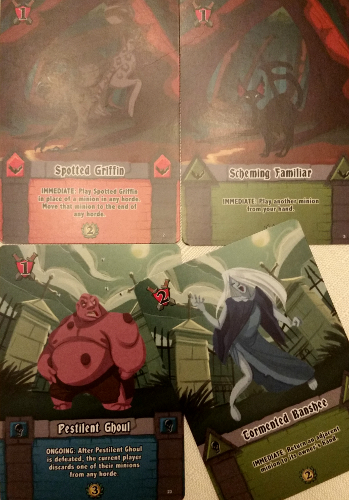
Here the Banshee can either return your own Familiar or your opponent’s Ghoul. Win-win really.
Prototype Shown
Indeed, while Retreat to Darkmoor is certainly on the lighter end of the complexity scale, it does have a slight sinister streak to it. At best, a full table is a chaotic menagerie of everyone using cards to continually muck with one another’s intentions. At worst, it can be a crash course in moderate cutthroat behavior, where undermining one another is essential to winning as everyone jockeys for survival and control of the highly valuable Locations.
The game doesn’t really attempt to hide this behavior. In fact, between its singular premise and great variety of card effects, Retreat to Darkmoor encourages it. That said, while Retreat to Darkmoor may foster the idea of every minion for themselves, the game generally steers clear of being intentionally punishing because of it. It’s not impossible to be slighted on occasion due to bad luck or a vindictive opponent who has designs of feeding you to the good guys, but that’s not the game’s intended purpose.
Turns rinse and repeat until the entire stack of Heroes is emptied, at which point the game is over and all remaining hordes escape, likely due to the Heroes getting bored of picking off your flunkies. The player with the highest Peril value among their surviving Monsters at each Location claims its VP value alongside the VP of their surviving forces. The overlord with the most VP…well, they aren’t the winner insomuch as they’re the faction to have lost the least. So, the best loser?
Remember, you technically already lost the minute you sat down to Retreat to Darkmoor. Failing to take the city was how you wound up in this situation in the first place.
Ultimately, this is one game where it’s good to be a little bad. Albeit possessing a simple and straightforward set of rules, Retreat to Darkmoor has a beguiling amount of possibility for a half hour game thanks to its extensive card interactions and player involvement. The game has depth without being terribly deep and and a modest amount of decision-making without being terribly complex. Retreat to Darkmoor is short, engaging, and proudly carries a devil-may-care attitude towards the well-being of the minions within its walls – which is rather fitting when you think about it. In the end, Darkmoor desires to carve out some space for itself in the Filler Game / Gateway Plus Game field, and it undoubtedly should be given that luxury. So, if you’d like to help Darkmoor’s minions find a more permanent home, or you’re just tired of the heroes always getting the attention, then consider heading on down to the game’s Kickstarter and help make a minion’s future a little brighter.
Photo Credits: Retreat To Darkmoor cover and artwork by Action Phase Games.

